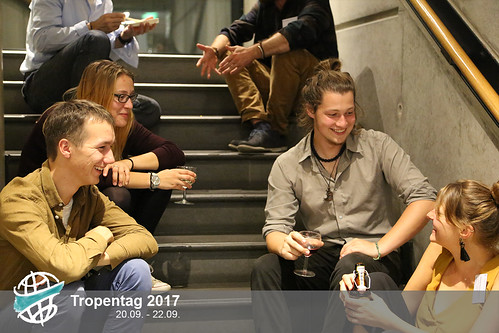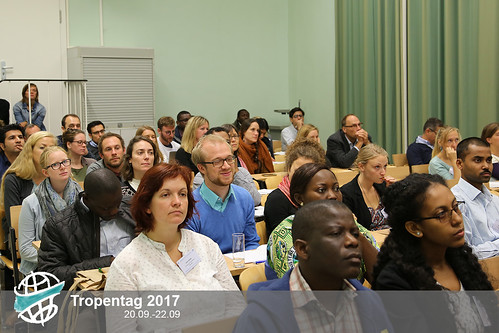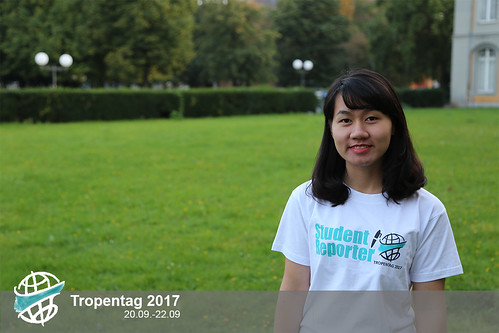kristianj71's blog
It's All About the Genes
Sun, 09/24/2017 - 12:23 — kristianj71I’m preaching to the choir, but to repeat for the nth time, climate change promises greater weather unpredictability and extreme temperatures worldwide. One strategy to mitigate the impact lies in mining genetic resources, gene banks and land races, for useful plant characteristics.
Farmers for thousands of years have carefully selected plants best fit to withstand the harsh environments found on their fields. This led to breathtaking genetic variety, as each field has its own unique microclimate. The resulting land races, often ignored due to their lower productivity, are an unexploited resource that could yield tomorrow’s answers. Dr. Mathias Wissuwa of JIRCAS in his oral presentation in “Genetic Resources and Abiotic Stresses” emphasized the need to tap the hidden genetic potential in land races and gene bank accessions.
Advances in genome sequencing technologies have lowered costs to a point where thousands of gene bank accessions can be mapped to find rare alleles that could enhance nutrient capture, or increased tolerance to drought. Once identified, market assisted selection (MAS) can be used to improve the crop. IRRI used this method to first identify the SUB1 gene, which gives flood tolerance, and then breed it into commonly grown varieties, creating ‘scuba’ rice. Dr. Wissuwa and JIRCAS has made promising headway in identifying a gene that promotes crown root growth to increase nutrient capture efficiency of zinc and phosphorous. At the end of his presentation, he went to great lengths to stress MAS had nothing to do with GMOs.
Silly Q&A at the "Social Event at Haus der Geschichte"
Fri, 09/22/2017 - 10:35 — kristianj71
The conference was nearly over, and it was time to celebrate. I walked around the room and asked a few silly questions (and some serious), many of which were collected from around the room. Enjoy!
What livestock animal would you be? Why?
A grass-fed milk cow in an agroforestry system in Columbia. –S.S.
A bull in a cattle herd in Switzerland. I could go everywhere in the pastures in the mountains. It would be a Demeter farm so I would hopefully live longer.-Dr. Christoph Reiber, Uni Hohenheim
I would be a rabbit because I am so fertile. –Anonymous
What’s the difference between a crocodile and an alligator?
The teeth…the size in general, the ecosystem… -Baldur Janz, IMK-IFU
One you see in a while, and the other later.- Jessica Lloyd (the creator of the joke), Uni Hohenheim
When you started (MSc. or PhD) what did you think you would be after?
Hmmm, nothing exciting, a professor teaching at the academy. I didn’t expect to be in agriculture. Back then I was only focused on biology. -Dr. Alejandro Pieters, Venezuelan Instititute for Scientific Research
Qui est ce qui est jaunes et qui attend?
Where Does the Water Go?
Thu, 09/21/2017 - 13:25 — kristianj71
You have to throw caution to the wind when you walk into the oral or poster sessions. You never know what you are going to get.
The "Water and Irrigation" oral presentations ranged from brave, young newcomers exposing their masters’ theses to the world, to veterans summarizing already published work. Here, as in most disciplines this conference, modeling has assumed a large role. After the session, I grabbed Dr. Giese from the University of Hohenheim, who pointed out though that, while part of the future of agricultural science, there were significant constraints due to limited available data. After all, without any connection to the real world, models have little relevance.
Model Fashions
Thu, 09/21/2017 - 01:14 — kristianj71I reluctantly made my way to the modelling poster presentations. There’s a grimy romanticism to agriculture in the tropics and subtropics, it’s hot, sweaty and dirty. Even measuring the leaf area index with a Plant Canopy Analyzer requires patience in sweltering heat. Modeling conjures a different image, endless hours staring at a screen tinkering with a tangled web of components.
This is only half the story, it also requires intensive field work too. Models can only be created and calibrated based on real data. Above all, modeling is part of the future of agriculture. Without it, it’s nearly impossible to show the advantages of intercropped systems, or the diffuse impacts of global warming.
Unfortunately, the poster session just made a complicated subject more obscure. The noise drowned out most of the presenters along with the questions. Regardless, I got enough of an impression to make a list of my favorites. I made sure my choices made sense by pulling aside a modeler from the audience.
Best Poster
Thanh Thi Nguyen: Assessing Impacts of Long-Term Maize-Cultivation Using the ‘Dynamic of Total Carbon and Nitrogen Distribution’ Model
Hana, social media guru
Tue, 09/19/2017 - 16:36 — kristianj71Hana is from Bắc Giang, Vietnam and studies International Development and Agricultural Economics at the Czech University of Life Sciences. She considers Tropentag 2017 as a learning opportunity, especially how to effectively use social media to enhance online content, like blog posts. She found the student reporter position on the Czech University of Life Sciences website, the location of Tropentag in 2014.
In Bonn, she hopes to meet new people with some common interests within the student reporter team, and learn more about herself as they work together. Of course, she also wants to drop in on some of the more interesting topics being discussed at the conference! In the end, she hopes to practice journalism in agriculture, even under time pressure so as to make a product she can be proud of.






